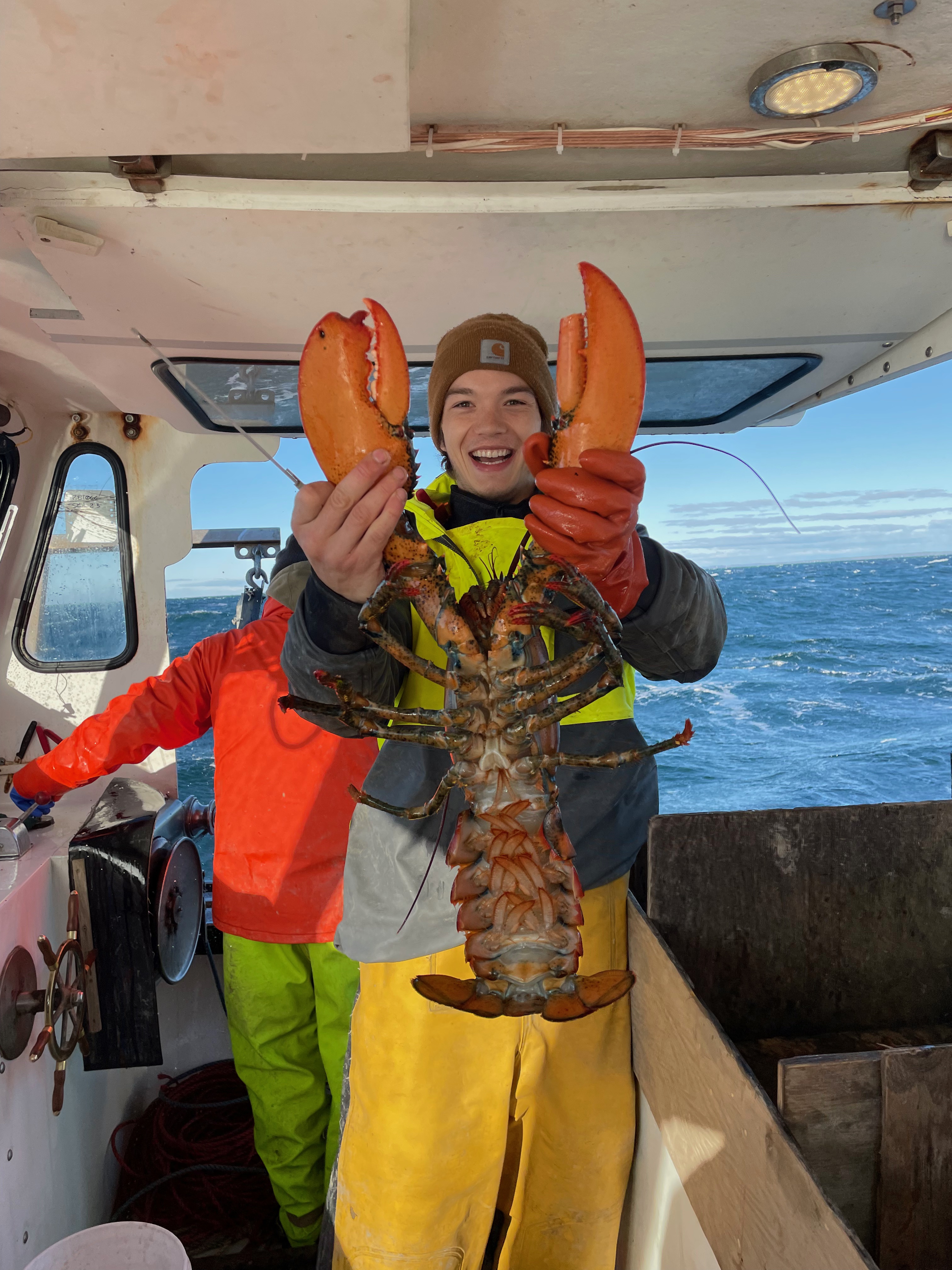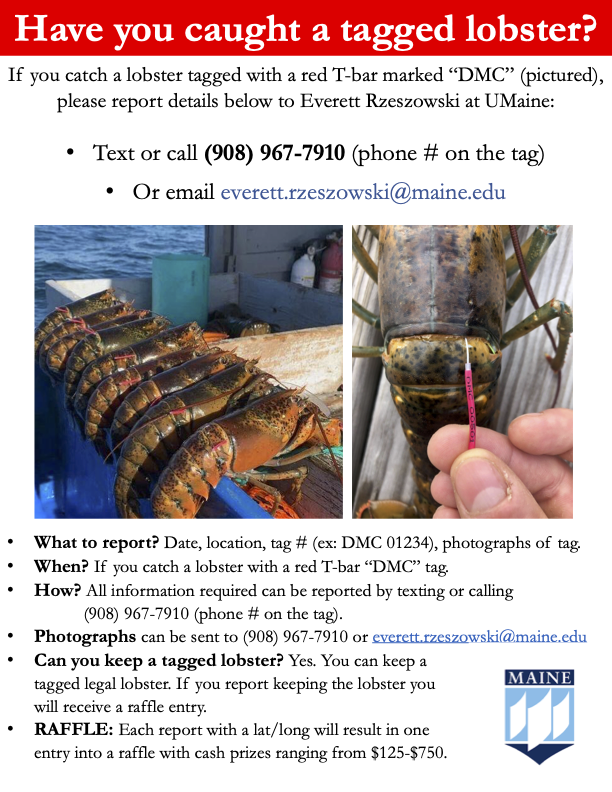Distributing Tag Reporting Fliers
Published:
This week I spent a couple days driving around midcoast Maine visiting a variety of harbor’s lobster wharfs, co-ops, and pounds to distirbute fliers about reporting caught lobsters tagged by our study. To incentivize tag reports we set up a raffle with 5 tiered prizesz ($750, $500, $250, $125 and $125) and each tiem a tag is reported with useable data the reporter gets a raffle entry. Useable data generally means a valid tag ID, date of capture, and approximate location in latitude and longitude.
The flier
I distributed the flier in East Boothbay, Boothbay, Southport and Cundy’s Harbor on Tuesday April 5 and then visited Rockland, Owl’s Head, Spruce Head, Tenant’s Harbor, Martinsville, Port Clyde, Friendship, New Harbor, and South Bristol on Thursday April 7. I planned to distribute fliers in South Thomaston, Bremen, Cushing and St. George on the second day as well but focused efforts on lobster buyers in large harbors that may draw fishermen from a variety of harbors to see a flier rather than individual wharves. That being said while spreading the word about the tagging study is my goal in these outreach trips, the best part of these days is the conversations I end up having with folks on individual wharves. They spend more time near or on the water than probably anyone I’ve ever met and usually have made a lot of observations. Maybe I need to be printing more fliers, or driving more.
Hearing from people who both support and disagree with the work I’m doing provides me with a key, new perspectives from the industry that I’m interested in helping to protect. This type of information can help me form ideas about how to approach my data, industry outreach or future research.
Fall reporting
In the fall survey tag reporting was dominated by Monhegan harbor and Monhegan fishermen swept the raffle winning all five prizes. I believe this happened in part because industry outreach was lackluster in the fall. Outreach was entirely digital distributing my flier via Maine Lobstermen’s Association, Maine Lobstermen’s Union, and American Offshore Lobster Association newsletters and posted in fishing Facebook groups i.e. All things lobstering. While the digital outreach that was done seemed successful, that’s really only a portion of the necessary outreach to reach a fishing community made up of thousands of busy small-scall owner-operators. I’m hoping that by visiting harbors at the conclusion of the fall survey and before beginning the spring session as well as adding a phone number to the new survey tags a greater proportion of fishermen will be informed about how, what and when to report a tagged lobster. When the lobsters come inshore this summer we will need engagement from outside of Monhegan where the season will close June 7 to get useful data.
There are other potential barriers to tag reporting, my largest concern being disengagement (not reporting found tags) out of dislike for the project itself. The best way to combat this attitude seems to be by being as up front with people as possible about how and why the survey is being done, how the tagging data is used, and if all else fails by cracking some jokes.


